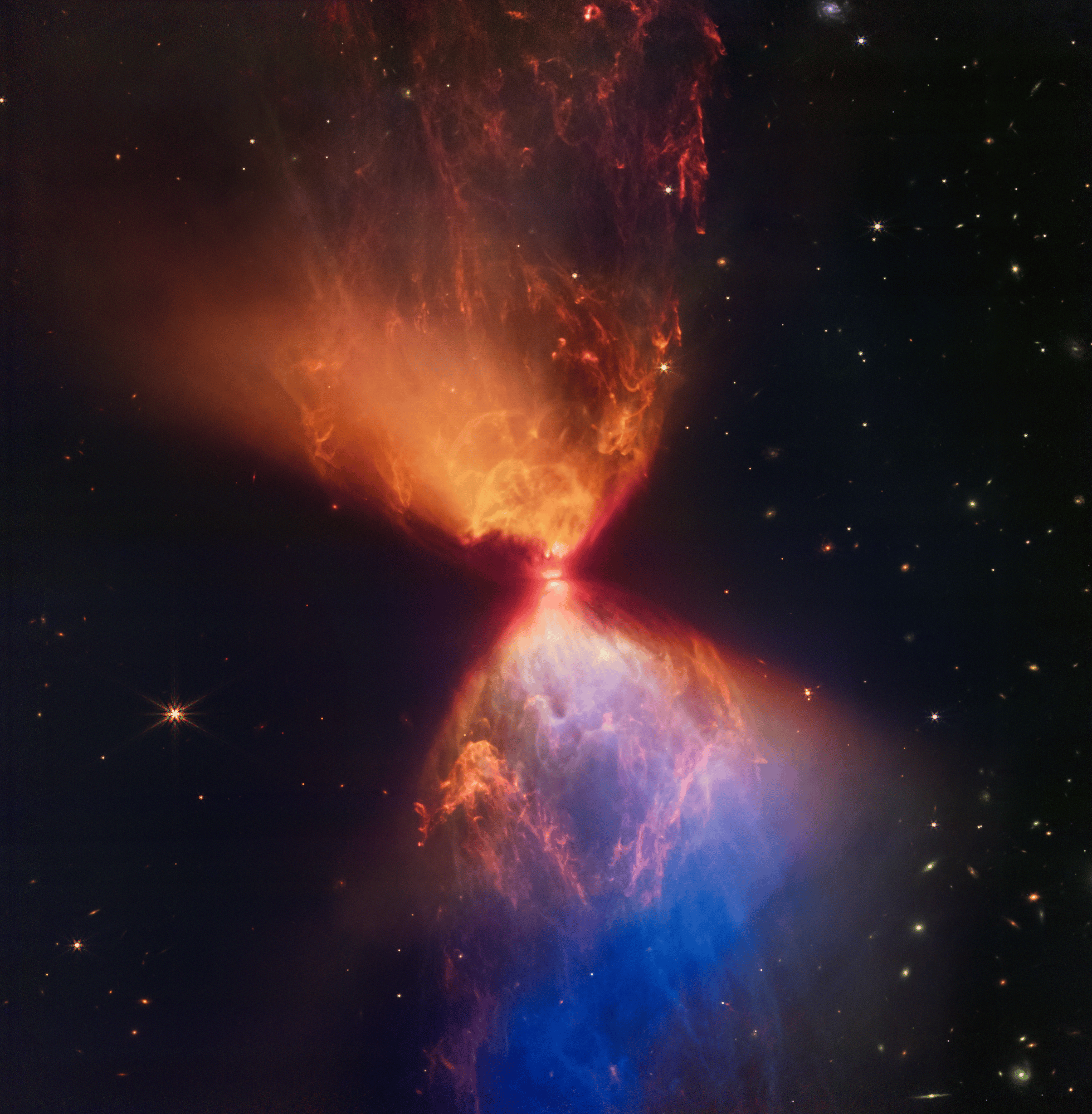From the article:
The clouds of dust and gas between Earth and the glowing gas near the black hole make the quasar appear red.
Ah. Nothing inherent in the quasar then, just a filter somewhere in between.
I didn’t read the article, but think it’s reasonable to guess “extremely red” could be a reference to redshift. If the article clarifies it’s the filtering effect of the dust or whatever, fine, but your guess is a perfectly good one.
But all quasars are extremely distant so any red shift should be anything but rare.
And the color results from filters (remember it’s IR)
From wiki :
The Pillars of Creation are set off in a kaleidoscope of color in NASA’s James Webb Space Telescope’s near-infrared-light view. The pillars look like arches and spires rising out of a desert landscape, but are filled with semi-transparent gas and dust, and ever changing. This is a region where young stars are forming – or have barely burst from their dusty cocoons as they continue to form.
These images are a composite of separate exposures acquired by the James Webb Space Telescope using the NIRCam instrument. Several filters were used to sample different infrared wavelength ranges. The color results from assigning different hues (colors) to each monochromatic (grayscale) image associated with an individual filter. In this case, the assigned colors are: purple: F090W, blue: F187N, cyan: F200W, yellow: F335M, orange: F444W, red: F470N
New paper based on JWST data:
Brian
Looks like MIRI is fully back in action:
They didn’t explicitly say so, but it sounds like they may have to limit use of the wheel to some extent, or otherwise take some action to mitigate the effects of the increased friction. I can’t see that being a huge problem, though. They’ll probably just want to limit how frequently they turn the wheel and group some observations together.
Thanks for the update – it is important to remember there are (IIRC) 17 observing modes of the JWST and this is just one of them.
Brian
Just saw this too !
Also … there’s a new image due today, 11:00am EST !
It’s now available !!
Stars!! Billions & billions of stars !
I think you mean
[mode=sagan]
Beel-yuns and beel-yuns of stars
[/mode]
Anyway, that’s Lundmark’s Nebula. The one that passed through the Milky Way 2000 million years ago.†
† Not really. Unless you’re Qadgop.
Here is the comparison vs Spitzer:
Brian
Am I the only one who looks at this picture and sees, not the Pillars of Creation, but Godzilla?
Wow, I can’t unsee it now. ![]()
I’m thinking it looks more like the Spinosaurus in JPIII.
And Rodan is coming up to attack him from below!
The protostar within the dark cloud L1527, shown in this image from NASA’s James Webb Space Telescope Near-Infrared Camera (NIRCam), is embedded within a cloud of material feeding its growth. Ejections from the star have cleared out cavities above and below it, whose boundaries glow orange and blue in this infrared view. The upper central region displays bubble-like shapes due to stellar “burps,” or sporadic ejections.
Credits: NASA, ESA, CSA, and STScI. Image processing: J. DePasquale, A. Pagan, and A. Koekemoer (STScI)
More info on this picture on
https://www.nasa.gov/feature/goddard/2022/nasa-s-webb-catches-fiery-hourglass-as-new-star-forms
Some more information on the micrometeoroid strikes on NASA Webb micrometeoroid mitigation update
To minimize future impacts of this magnitude, the team has decided that future observations will be planned to face away from what is now known as the “micrometeoroid avoidance zone.”
This does not mean that these areas of the sky cannot be observed, only that observations of those objects will be more safely made at a different time in the year when Webb is in a different location in its orbit.
JWST has made a molecular and chemical profile of WASP-39b. They detected for the first time concrete evidence of photochemistry on an exoplanet.
I thought they’d discovered concrete.
Then i read the rest of the sentence.
